
Nodo
Scope & Guideline
Bridging disciplines to enhance understanding of our world.
Introduction
Aims and Scopes
- Interdisciplinary Exploration of Urban Studies:
Nodo emphasizes the integration of urban studies with social sciences, exploring how urban environments impact social dynamics, sustainability, and cultural practices. - Art and Aesthetics in Social Contexts:
The journal investigates the role of art and aesthetics in shaping cultural identity, memory, and resistance, particularly in relation to marginalized communities. - Sustainable Development and Urbanism:
A core focus on sustainable practices in architecture and urban planning, with papers examining innovative solutions to urban challenges, including sustainability and community engagement. - Cultural and Historical Analysis:
Nodo provides a platform for analyzing historical and cultural narratives, particularly in Latin America, addressing how these narratives influence contemporary practices. - Technological Innovations in Art and Urban Space:
The journal explores the impact of technology on art and urban spaces, including sound art and digital media, reflecting on their implications for community interaction and cultural expression.
Trending and Emerging
- Urban Sustainability Initiatives:
There is a growing emphasis on urban sustainability, exploring innovative agricultural practices like urban aquaponics and their role in promoting ecological balance within urban settings. - Community Engagement and Social Interaction:
Recent works highlight the importance of community interaction and accessibility in public spaces, focusing on how recreational spaces can foster social connections. - Artivism and Political Engagement:
A rise in the exploration of artivism, where art intersects with activism, reflects a trend toward using artistic practices as tools for social change and resistance. - Transmedia and Narrative Strategies:
Emerging interest in transmedia storytelling techniques illustrates a trend towards integrating narratives across various media forms to engage audiences more deeply with social issues. - Decolonial Perspectives in Aesthetics:
An increasing focus on decolonial aesthetics signifies a shift towards understanding the impact of colonial histories on contemporary art and urban practices, advocating for diverse voices in cultural discourse.
Declining or Waning
- Traditional Architectural Practices:
There has been a noticeable decrease in papers focusing solely on conventional architectural methodologies, as the journal shifts towards more innovative and interdisciplinary approaches. - Purely Theoretical Aesthetics:
The focus on abstract theoretical explorations of aesthetics, without practical applications or real-world contexts, appears to be waning in favor of more grounded, applied studies. - Localized Historical Narratives:
While historical narratives have been important, there is a decline in studies centered solely on localized histories without a broader contextualization in contemporary issues. - Art as Solely Decorative:
Papers that treat art primarily as a decorative element, detached from socio-political contexts, are less frequent, reflecting a shift towards art's engagement with social and political discourse.
Similar Journals
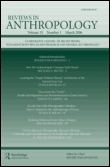
Reviews in Anthropology
Illuminating the Path of Anthropological InquiryReviews in Anthropology, published by Routledge Journals, Taylor & Francis Ltd, is a vital academic journal for scholars and practitioners in the fields of anthropology and cultural studies. With a history extending from 1974 to 2024, this journal reflects the evolving discourse within the social sciences, offering a collection of insightful reviews and critiques that shape contemporary anthropological thought. Although it operates under a non-open access model, its impact is underscored by its positioning in the Q3 quartile for both Anthropology and Cultural Studies, as well as respectable Scopus rankings. This journal serves as a platform for disseminating influential research, fostering academic dialogue, and enhancing understanding of diverse cultures and societies. Its robust editorial board and commitment to quality scholarship make it an essential resource for researchers, professionals, and students looking to deepen their knowledge and contribute to the ever-changing landscape of anthropology.

Journal of Urban Culture Research
Decoding the Pulse of Urban CultureThe Journal of Urban Culture Research is a leading academic journal dedicated to the interdisciplinary exploration of urban culture and its various dimensions, including history, music, and the visual and performing arts. Published by Chulalongkorn University, Faculty of Fine & Applied Arts, this journal is renowned for its commitment to fostering innovative research and critical discourse within the urban studies landscape. With a notable impact in multiple fields, it proudly holds Q1 rankings in History, Music, and Visual Arts and Performing Arts, and is positioned in the top quartile for its contributions to the arts and humanities. The journal's coverage spans the years from 2019 to 2024, and it is indexed in Scopus, reflecting its prominence among researchers and professionals alike. Although it does not provide open access, it is instrumental for those looking to delve into the complexities of urban environments through a cultural lens, making it an essential resource for scholars, students, and practitioners eager to understand the evolving dynamics of urban life.
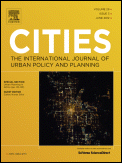
CITIES
Exploring the Dynamics of Urban LifeCITIES is an esteemed academic journal published by Elsevier Science Ltd, focusing on interdisciplinary research pertaining to urban environments, their development, and associated sociopolitical dynamics. Since its inception in 1983, CITIES has become a vital resource for scholars and practitioners in the fields of Urban Studies, Sociology, Political Science, and Tourism, Leisure, and Hospitality Management, reflecting its distinguished status with a 2023 Q1 ranking in multiple categories. With an impressive Scopus rank placing it among the top percentile of journals in these domains, it serves as a platform for innovative research and dialogue on pressing urban issues. Although it currently does not offer open access, CITIES attracts a global readership dedicated to advancing knowledge on urbanism. Scholars and professionals seeking to contribute to the evolving discourse on urban life will find CITIES an essential publication, bridging theories and practice for a better understanding of our urban future.

Contexto-Revista de la Facultad de Arquitectura Universidad Autonoma de Nuevo Leon
Elevating Architectural Insights for a Global AudienceContexto-Revista de la Facultad de Arquitectura Universidad Autonoma de Nuevo Leon is a prominent open-access journal published by the Universidad Autonoma de Nuevo Leon, Faculty of Architecture, dedicated to the fields of architecture, urban studies, and visual arts. Since its establishment, the journal has steadily contributed to the discourse in these interconnected domains, particularly given its commitment to open access since 2011, allowing for wider dissemination of knowledge and research. With its ISSN 2007-1639, Contexto has evolved to encompass a range of topics pertinent to contemporary architectural practices and urban development trends, reflecting its vision to foster innovative dialogues and critical analyses among researchers, practitioners, and students. With a current Scopus ranking showcasing its influence—specifically a Q4 classification in Architecture and Urban Studies, and a Q2 in Visual Arts and Performing Arts—this journal serves as a vital resource for academia and industry alike. Authors and readers are encouraged to engage with its dynamic content and contribute to its ongoing mission of enriching the architectural and urban narratives within Mexico and beyond.
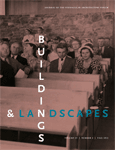
Buildings & Landscapes-Journal of the Vernacular Architecture Forum
Unveiling the Stories Behind StructuresBuildings & Landscapes: Journal of the Vernacular Architecture Forum is a pivotal scholarly publication that delves into the intersection of architecture, urban studies, and the arts. Published by University of Minnesota Press, this journal serves as a vital platform for the exploration and dissemination of research covering the rich tapestry of vernacular architecture and its implications in contemporary society. With its ISSN 1936-0886 and E-ISSN 1934-6832, the journal has established its significance, reflected by its notable quartile rankings in 2023, including Q4 in Architecture and Urban Studies, and Q3 in Visual Arts and Performing Arts. Although not open access, it remains an essential resource for researchers, professionals, and students looking to deepen their understanding of how built environments shape cultural identities and vice versa. The journal welcomes contributions that critically examine the role of vernacular architecture in both historical and modern contexts, making it an influential beacon of knowledge from its establishment in 2010 to the present. For those invested in the dialogue surrounding place, culture, and architecture, Buildings & Landscapes offers a unique and scholarly avenue for inquiry.

OSTERREICHISCHE ZEITSCHRIFT FUR VOLKSKUNDE
Bridging Disciplines in the Heart of AustriaOSTERREICHISCHE ZEITSCHRIFT FUR VOLKSKUNDE is a dedicated academic journal published by the VEREIN FUR VOLKSKUNDE that focuses on the interdisciplinary study of folklore and ethnology, particularly in the Austrian context. With a long-standing history of contributing to cultural studies, this journal serves as an essential resource for researchers, professionals, and students interested in the nuances of social practices, traditions, and cultural narratives. Although it has ceased its indexing in Scopus as of 2019, its impact is reflected in its rankings, particularly in the categories of Social Sciences and Arts and Humanities, making it a crucial reference point for those studying cultural phenomena. The journal, with ISSN 0029-9669, is based in Vienna, Austria, and offers a rich compendium of articles that promote scholarly discourse and broaden understanding in the field of Volkskunde. As it continues to foster academic dialogue, OSTERREICHISCHE ZEITSCHRIFT FUR VOLKSKUNDE remains a notable contributor to the evolution of cultural studies in the region and beyond.
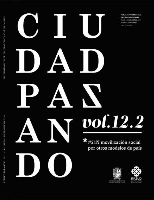
Ciudad Paz-Ando
Empowering Communities through Open Access Research.Ciudad Paz-Ando is an esteemed open-access journal published by UNIV DISTRITAL FRANCISCO JOSE DE CALDAS, dedicated to advancing the field of peace studies and urban development. Since its establishment in 2008, the journal has been committed to fostering scholarly dialogue around the intersection of societal transformation, cultural dynamics, and sustainable urban policies. Based in Bogotá, Colombia, Ciudad Paz-Ando serves as a vital platform for researchers, professionals, and students to publish and access innovative research aimed at addressing complex urban challenges in contemporary society. With a focus on interdisciplinary approaches, the journal encourages contributions that seek to generate knowledge and inspire action towards peace and social equity in urban contexts. The journal's open-access model ensures that research is freely available to a global audience, thereby enhancing its impact and reach within the academic community and beyond.

Planlama-Planning
Navigating the Complexities of Urban SpacesPlanlama-Planning is a distinguished journal published by KARE PUBL, dedicated to the evolving field of urban and regional planning. With its ISSN 1300-7319, it provides a platform for researchers, practitioners, and students to share innovative research and comprehensive reviews on critical planning issues and methodologies. Situated in Istanbul, Turkiye, the journal aims to facilitate discussions that address contemporary challenges in planning and promote sustainable development. Although currently not an open-access journal, it upholds rigorous peer-review standards to ensure high-quality publications. With a commitment to advancing knowledge and fostering collaboration across disciplines, Planlama-Planning stands as a crucial resource for those engaged in shaping cities and communities worldwide.
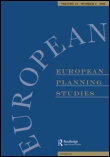
EUROPEAN PLANNING STUDIES
Exploring the Dynamics of European Spatial GovernanceEUROPEAN PLANNING STUDIES is a leading journal in the field of urban studies, published by Routledge Journals, Taylor & Francis Ltd. Since its inception in 1993, this esteemed publication has been pivotal in advancing the discourse on geographical, planning, and developmental issues across the European landscape. With a commendable 2023 Q1 rating in the Geography, Planning, and Development category and a remarkable rank of #88 out of 821 in Scopus, the journal is recognized for its rigorous peer-reviewed articles that provide innovative insights and critical analyses. Although the journal does not offer open access, it caters to a diverse readership, including researchers, professionals, and students, ensuring a comprehensive understanding of contemporary planning challenges and strategies. The journal's objectives include fostering interdisciplinary dialogue among planners, policymakers, and academics, making it an essential resource for those engaged in shaping sustainable urban environments and informed spatial governance in Europe and beyond.

Journal of Iberian and Latin American Research
Navigating the evolving landscapes of literature and cultural theory.Journal of Iberian and Latin American Research, published by Routledge Journals, Taylor & Francis Ltd, is a key resource for scholars interested in the rich cultural, literary, and sociopolitical landscapes of Iberian and Latin American contexts. With an ISSN of 1326-0219 and an E-ISSN of 2151-9668, this journal is dedicated to advancing research from 1995 to 2008 and continuing between 2010 and 2023, reflecting the evolving dynamics in these regions. Notably esteemed within its field, it holds a Q3 categorization in Cultural Studies and a Q2 rating in Literature and Literary Theory as of 2023. Its strong performance is underscored by its ranking within the 84th percentile in Literature and Literary Theory and engagement within interdisciplinary dialogues across various domains. While it does not offer open access, the journal remains a vital component of academic discourse, attracting researchers, professionals, and students who seek to explore the intricate narratives and theoretical frameworks that shape Iberian and Latin American studies. Whether you are delving into socio-cultural critiques or examining literary trends, the Journal of Iberian and Latin American Research is an indispensable platform for your scholarly endeavors.